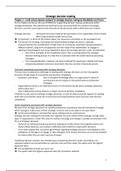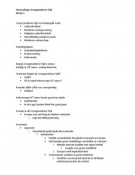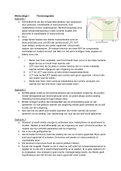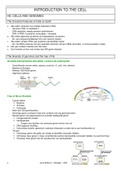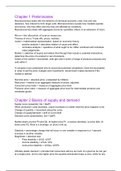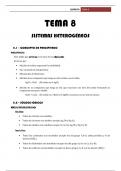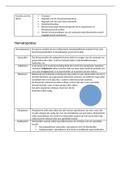Chapter 2 – multi-criteria decision analysis for strategic decision making by Montibeller and Franco
In this chapter we discuss the use of MCDA for supporting decision making, particularly within
strategy workshops. We examine the technical issues associated with the content of strategic
decisions, and the social aspects that characterise the processes within which they are created.
Strategic decision: infrequent decisions made by the top leaders of an organisation that critically
affect organizational health and survival
Is important, in terms of the actions taken, the resources committed, or the precedents set
The process of creating, evaluating and implementing strategic decisions is typically
characterised by the consideration of high levels of uncertainty, potential synergies between
different options, long term consequences and the need of key stakeholders to engage in
significant psychological and social negotiation about the strategic decision under consideration
o One of the strengths of this traditional view is that is conceptualises the strategic
decision making process in a way that is consistent with the reality faced by practising
managers
o This conceptualisation, however, has been criticised for assuming a rational and linear
relationship between decisions and actions that has not been empirically proven
Technical complexity associated with strategic decisions
The two most troublesome challenges in dealing with strategic decisions are the inescapable
presence of high levels of uncertainty and decision complexity.
- Epistemic uncertainty lack of complete knowledge about an organisation’s external
environment and its impact on the performances of potential
strategies
- Organisational values is an important source of uncertainty (doubt about strategic objectives,
policy values etc.)
- Inter-relationship among choices is a major source of decision complexity
If MCDA is to be used for tackling strategic decisions, it must be able to provide support for dealing
both with uncertainties about the environment and organisational values and also with decision
complexity!
Social complexity associated with strategic decisions
We posit that strategic decisions are socially produced an reproduced mental frameworks through
which managers make sense of their strategic concerns and so are able to act upon them.
Social representations; retrospective sense making process; social process
Strategic decision making thus provides the cognitive structure within which strategic change takes
place in organisations. Under this view the reality of strategy and change is socially constructed in the
form of strategic decisions.
- Research on individual and group decision making has vividly shown how cognitive biases and
dysfunctional dynamics can produce ineffective and sometimes catastrophic decisions
- Is has been argued that successful agreements regarding strategic decisions may depend on the
willingness of managers to engage in open dialogue if the choices they face are not to be dictated
by means other than an overt exercise of power
Traditional decision analysis, the standard way of analysing decisions under uncertainty is to
represent options and uncertainties as a decision tree and then select the option with the highest
expected value.
The probabilities should sum up to one
The option with the highest expected value (EV) should be selected
1
,If multiple criteria are considered in the evaluation, usually a multi-attribute utility function is
employed to aggregate the partial performances; the option is the one with the maximum expected
utility. There are three main assumptions:
1. The outcomes from a chance node should be mutually exclusive and collectively exhaustive.
These two conditions make the sum of the probabilities of outcomes equal to one.
2. It is possible to obtain, in a reliable way, accurate probabilities of outcomes.
3. The use of expected value rule as a way of selecting the best alternative.
a. The expected value rule only makes sense in repeated gambles, where the expected
value provides a weighted-average outcome. But in one-off gambles, it has shown to be a
poor guide for choice
b. Strategic decisions are by nature unique and most of them one-off, so it may not be
always appropriate to use the expected value rule
These three assumptions are difficult to hold in strategic decisions
Scenario’s presents a coherent story that may happen in the future and is used to explore how
different strategies would perform under such circumstances
- Managers already use it, which makes it a proper method to apply
- Two features distinguish scenarios created with scenario planning from the way that uncertainty
is modelled in traditional decision analysis (decision tree)
1. Some scenarios may be quite extreme, with a very small possibility of occurrence.
Considering an extreme scenario also lead managers to think about how robust the strategy
they are assessing is and how to create one robust strategy.
2. Scenarios are not, necessarily, mutually exclusive and exhaustive. This means that one should
not attach a probability of occurrence to each scenario.
a. Most scenario planning proponents are strongly against the use of probabilities in
appraising scenarios, as they should not be considered as either states of nature or
predictions, but instead, as learning tools to explore the future
Literature on scenario planning is limited in discussing how to identify/design high-quality
strategies from a scenarios analyst
It also does not address the need of appraising these strategies taking into account multiple
organisational objectives, which we will discuss next
One important change that organizations may experience, when using MCDA for strategic decisions,
is the use of a value-focused framework to guide the decision making process. In this case, strategies
are seen as means to achievement of organisation’s strategic objectives. This may help both in
aligning the strategic vision of the organisation with its strategic objectives, and in better scoping the
strategic choices it is considering.
A key aspect in supporting strategic decisions using value-focused thinking is, therefore, the need
to help the definition and structuring of these strategic objectives
o Tools: means-ends networks, causal/cognitive maps, post-it workshops with CAUSE
framework, affinity diagrams, soft system methodology
Instead of maximum expected utility, scenario planning proposers have stressed the need for finding
robust strategies, those that perform relatively well across the scenarios.
Multi-criteria community also calls for robustness. If the analyst is using MCDA with multiple
scenarios two aspects should be of a concern:
o The robustness of performance of a strategy across scenarios; inter-scenario robustness
o The spread of performances across scenarios; inter-scenario risk
The most helpful way for supporting decision makers choices is visual inspection of performances
and spreads and focus on inter scenario robustness and inter scenario risk.
2
, 3

